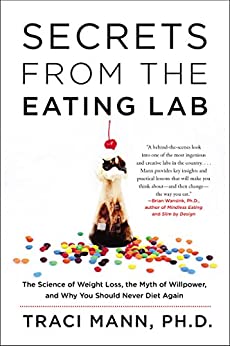 Photo by Andres Ayrton from Pexels Photo by Andres Ayrton from Pexels
Each society has its own cache of pointless folklore and half-truths that are transmitted from source to source, one to another. However, it could be the case that weight loss could take up the most time and effort for any of them, even the most perilous urban legends.
In the media today, there is a ton of free advice available, and if taken seriously it might drastically derail your plans attempting to lose weight. This could result in the type of frustration that gives you the impression that you "should to stay overweight for life.” Reject that statement. This is not true. Review the weight loss myths listed below and make your own inferences:
Myth #1. Exercise on an empty stomach to increase fat burning.
The overall number of calories is what causes effective weight loss, not how or why they were destroyed; they were burned throughout the day. Exercise is still important whether it's morning or night. Early morning exercise provides no advantages over later-night activity. Studies reveal that increased metabolism induced by anaerobic exercise is actually less after a large meal. Which probably means that more energy is being used for digestion than what is being used to repair muscle. Myth #2. It's preferable to exercise more. Every workout is advantageous to the individual. However, depending on what is being compared, more is not necessarily better. There is a degree and frequency that is trying to be accomplished, which is necessary to produce weight loss results. After this level is reached, additional exercise can have the opposite effect, preventing the body from recovering and adapting to the stress brought on by the exercise, which can harm your weight loss outcomes. Myth #3. Muscle will convert to fat if exercise is stopped. This in not possible. Muscle and fat are two different types of tissues in the body and you cannot convert one into the other. This is like attempting to transform water into milk. If you stop training, the muscles will shrink in size - and do not disappear. The more calories taken in that are not burned off will be deposited as fat.
Myth #4. You are not working hard enough if you are not perspiring.
The body uses sweat as a cooling mechanism. Body temperature is influenced by a variety of factors, including body-fat percentages, workout modalities, and room temperature, attire, level of exercise, and intensity of the workout. Sweating output cannot be used to evaluate exercise. A trained individual will frequently perspire a lot because their body can control heat more effectively. Myth #5. Consume sugar prior to workout to boost energy. Consuming sugar will cause blood sugar levels to rise quickly. This rapid rise stimulates a release of insulin, which quickly removes the excess sugar from the blood system, often causing your blood sugar levels to drop, occasionally falling below where it began, leading to fatigue more quickly. Myth #6. Putting on weight is a natural aspect of aging. Age is not a justification for acquiring weight. We become increasingly sedentary as we get older and we begin losing muscle mass. Your metabolism's effectiveness is directly related to how much muscle you have on your physique. An effective method for preserving your body's muscle mass and preventing a decline in your metabolism is by performing a high-intensity strength-training program once a week. This will help with your weight management.  Click Here for Weight Loss Secrets Click Here for Weight Loss Secrets
Myth #7. The most effective workout is “X."
Claims like this typically have a marketing plan behind them. Even when statements are based on factual evidence, prejudice, and knowledge, they are only marginally useful to the ordinary exerciser. Choosing the right exercise is crucial. Decide on a pastime activity that you enjoy and do it well, and consistently. Myth #8. I can eat as much of it as I want if it is fat-free. Sadly, being fat-free does not imply being calorie-free. The phrase "fat free" is deceptive because if you eat anything too much, even foods without fat, and you don't burn off those calories, your body will store the excess as fat. Myth #9. Avoid drinking water while exercise to avoid cramping. By drinking liters of icy cold water in one go while exercising you will probably suffer from cramps. This is why it is important to drink water continuously before, during, and after exercising to replace the fluid you've lost and avoid any discomfort. Myth #10. I won't improve without a personal trainer. You can employ a personal trainer as a way to attain your objectives, but you are a responsible adult who is making choices and establishing your own objectives once you are aware of the best course of action. Following a healthy diet and workout regimen does not call for someone to be standing over and instructing you on how to do it. Myth #11. I'll get rid of my pot belly by working out my abs. Toning and strengthening your abdominals through exercise will tighten the midsection but not the waistline. A pot belly is the result of fat deposits. Fat reduction comes from burning more calories than you take in. Fat is reduced uniformly throughout the body. There is no such thing as spot reduction. Disclaimer: The videos, posts, and comments contained in our *Health & Weight Loss Categories* on this website are not medical advice or a treatment plan and are intended for general education and demonstration purposes only. They should not be used to self-diagnose or self-treat any health, medical, or physical condition. Don’t use this website to avoid going to your own healthcare professional or to replace the advice they give you. Consult with your healthcare professional before doing anything contained on this website.
0 Comments
Leave a Reply. |
|